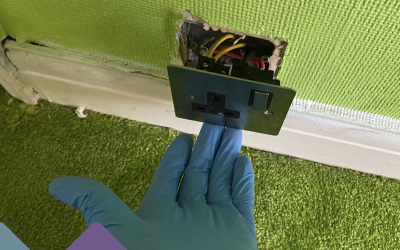In today’s Property Surveying blog, we are going to be taking an informed look at property dilapidations.
Dilapidations will come into play towards the end of a tenant’s lease of their commercial property and premises.
With the vast majority of commercial properties, they will be occupied by the tenant on a fully repairing and insuring basis (FRI).
This ultimately means that it is the tenant who is liable and responsible for the maintenance and upkeep of the building, along with their natural responsibilities in respect of keeping the building insured, paying the landlord their rent, and ensuring that the building complies with necessary health and safety and Building Regulations requirements.
With the vast majority of commercial premises, the tenant is likely to alter and adjust the aesthetics and appearance of the property to enable them to get the most out of it for their business.
To put this into perspective, the vast majority of commercial retail units will be fully fitted out with the tenant’s brand, credentials, colours and shop fittings.
When the tenant decides to leave the property, or approaches the end of their lease term, without exercising the option to renew it, in this instance the landlord will want to ensure that they are given their property back in a reasonable and fair quality. This ensures that they are not taking back the premises and property, to then have to undergo extensive costly making good, upkeep and repair. This is where a schedule of dilapidations comes into play.
A schedule of dilapidations is the list of works that the landlord believes that their tenant should undertake in order to leave the property in a fit and sound state at the end of the tenant’s occupancy.
In more cases than not, the schedule of dilapidations will be prepared by the landlord’s property surveyor, that property surveyor methodically and carefully going through the property in a step by step basis to ensure that the various defects and issues are all noted and clearly set out.
Once the schedule of dilapidations has been presented to the landlord, they will then share that with their tenant along with the request to rectify the noted issues.
Alternatively, along with the request to reimburse them for the costs to remedy and rectify themselves. Schedule of dilapidations surveys aren’t just restricted to imperfections and disrepair. They are also going to focus on the occupancy loss during the course of the required works.
Therefore should the tenant opt to not undertake the dilapidations and yield up the property, the tenant is likely to find themselves likely for a period of rent whereby the landlord wasn’t able to rent the property, on account of undertaking the remedy and rectification works themselves.
The tenant can also expect some degree of landlord’s management fee to enable them to instruct a contractor, and likely a project manager to undertake and oversee the planned dilapidations construction works or decorations works.
Here at Stokemont, we would advise that tenants aim to undertake schedule of dilapidations works themselves.
This not only ensures the least amount of dispute between the landlord and tenant in respect of the scope and quantum of dilapidations. Ultimately, it will also ensure that the property is handed back to the landlord in a fair and reasonable condition.
This very much being akin to the condition the tenant would have taken and occupied the property in.
If you would like to discuss dilapidations surveys with our team of commercial building surveyors, please feel free to get in touch with us today, we will be more than happy to assist and advise you.




